YouTube Disclaimer Examples & How to Write Yours
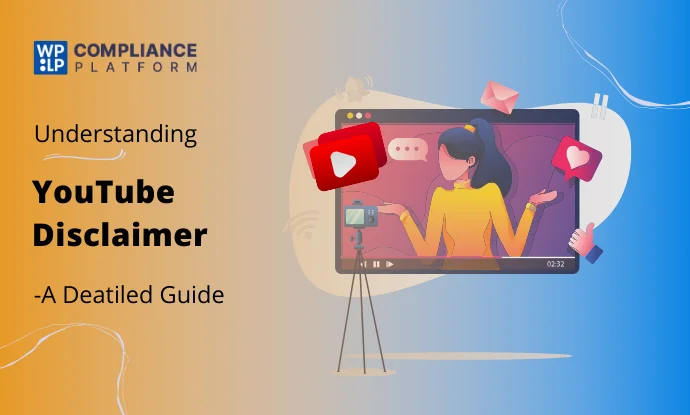
Summary
Our article covers essential disclaimers for affiliate marketing, fair use, sponsorships, and legal responsibility. It explains why they matter and how to use them effectively.
Learn how to apply them correctly with useful examples and best practices.
Are you aware of what a YouTube disclaimer is?
A disclaimer is a legal declaration outlining the risks, obligations, and rights users may assume when accessing website content.
YouTube disclaimer is now considered essential as it has become a popular learning platform beyond just a source of entertainment.
Many experts use the Internet to communicate with their target audiences, while knowledge seekers use it as a source of new information. One must exercise caution while sharing information online to avoid potential issues if it is not used or processed carefully. To avoid such legal issues, a YouTube disclaimer comes in.
This article aims to provide an overview of the YouTube disclaimer and some tips on how to write a quality disclaimer for your YouTube channel.
- What Is A YouTube Disclaimer?
- Benefits of Having a YouTube Disclaimer
- What is a YouTube Copyright Disclaimer?
- What is a fair use copyright disclaimer for YouTube?
- How To Write a YouTube Disclaimer?
- Who Needs a YouTube Disclaimer?
- How to Create a General Disclaimer
- Where Should You Place The Disclaimer?
- FAQs
- Final Thoughts
What Is A YouTube Disclaimer?
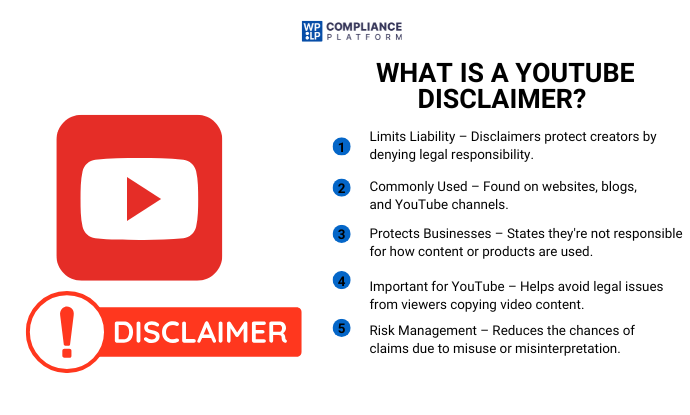
A disclaimer is an official statement that limits an individual or organization’s liabilities by denying responsibility. It usually appears on websites, blog articles, and YouTube video channels to protect against legal issues. Companies use it to state that they are not responsible for any consequences that may arise from using their products or services.
A disclaimer is a statement that you may encounter on a YouTube channel. Nowadays, YouTube has become a popular source of learning for many people. Whether it’s technology or just a recipe, YouTube is often the first platform that comes to mind when people want to watch a video or learn something new.
The reason for this is simple: YouTube provides a visual step-by-step guide. However, there is always a risk of unwanted incidents occurring when viewers try to imitate the process they see on YouTube. As a result, YouTube channels must publish a disclaimer to avoid unnecessary claims by users.
Benefits of Having a YouTube Disclaimer
There are various benefits to having a YouTube disclaimer, but if you want to receive the following benefits, you must include a YouTube disclaimer.
- It helps limit your legal liabilities and responsibilities.
- Disclaimers can protect and maintain your intellectual property rights
- You’ll minimize your risk of receiving unfair copyright infringement strikes.
Let us discuss each one of them in detail.
1. YouTube Disclaimer Helps To Limit Your Legal Liabilities.
Add disclaimers to your YouTube content to avoid potential liability issues, especially if your videos provide advice or professional expertise.
You must inform your viewers that your video is not a substitute for professional advice and that any action taken based on its content is solely at their discretion.
To ensure maximum effectiveness, it is best to include liability disclaimers in the description box, the About page of your channel, or even directly in the video itself.
2. Protect Your Intellectual Property Rights
Including a simple YouTube copyright disclaimer in the description of your YouTube video can help safeguard it against any unauthorized reproduction, reuse, or copying without your consent.
By doing so, you are clearly informing your viewers that your video content is protected by copyright laws and that you will take legal action against any misuse of your work.
If you already have a copyright notice on your website, you can easily copy and paste it into the description of your YouTube videos.
3. Reduce Unfair Copyright Infringement Strikes
If you use copyrighted materials in your YouTube video, you can add a fair use disclaimer to lessen the chances of getting a copyright strike.
This disclaimer cannot guarantee that you won’t get an infringement notice, but it can serve as evidence that you are aware of the laws, acted in good faith, and did not intend to misuse the original author’s work.
What is a YouTube Copyright Disclaimer?
A copyright disclaimer is a statement or notice used to clarify the copyright status of material being used or shared.
It is usually placed alongside or within the content and informs the audience about the rights and limitations associated with copyrighted material.
The disclaimer may state that the material being used is protected by copyright and that permission is required to duplicate or distribute the content.
The disclaimer’s purpose is to ensure transparency, provide attribution, and avoid unintentional infringement of copyright laws. It helps users understand their rights and responsibilities when they use copyrighted content.
Types of YouTube Copyright Disclaimers
Copyright disclaimers are a crucial legal document that YouTube creators use to safeguard their original creations. They convey ownership rights and prohibit the content’s distribution, replication, and illegal use. Depending on the level of protection required, various copyright disclaimer options exist.
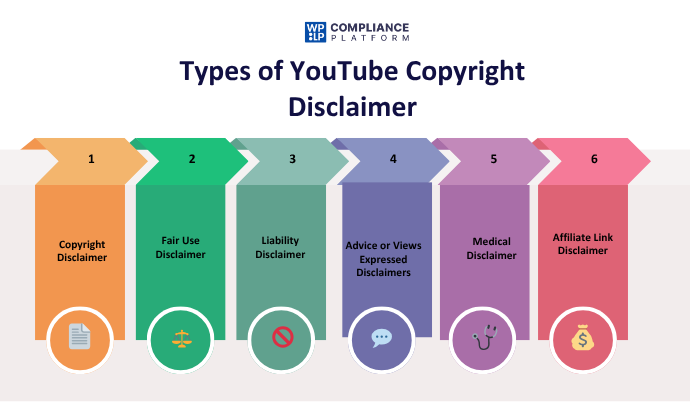
Here are some types of YouTube copyright disclaimers:
- Copyright Disclaimer: This text outlines the purpose of a disclaimer, which protects against copyright infringement claims. It should incorporate a declaration of fair use and credit the original creator when utilizing someone else’s copyrighted content.
- Fair Use Disclaimer: The creator clarifies that they do not own the content used in the video and asserts fair use protection, preventing others from using the videos for their purposes.
- Liability Disclaimer: This disclaimer clarifies that the creator is not liable for any harm or damage from using their content.
- Advice or Views Expressed Disclaimers: This disclaimer clarifies that the opinions or advice provided are personal and not offered as professional advice.
- Medical Disclaimer: The creator clarifies that readers should not take the content as medical advice or use it as a substitute for professional medical advice.
- Affiliate Link Disclaimer: This statement states that the author may earn a commission if viewers click on any affiliate links in their video.
Customizing your YouTube disclaimer according to your industry and the types of liabilities you may face is crucial. The disclaimer for a video should be easily noticeable and clearly state all rights and licenses associated with the content.
What is a fair use copyright disclaimer for YouTube?
A fair use copyright disclaimer for YouTube is essentially a brief statement that creators insert into the description of their videos (sometimes at the start of their video) to designate that any copyrighted materials they used (clipped videos, images, audio files, etc.) are used in accordance with the Doctrine of Fair Use for purposes of commentary, criticism, news reporting, teaching, or research.
Important: A disclaimer doesn’t guarantee protection from copyright strikes. YouTube and copyright owners ultimately decide whether your use qualifies as fair use. But including one can help signal your intent and strengthen your position if there’s a dispute.
Example Fair Use Disclaimer for YouTube
Copyright Disclaimer under Section 107 of the Copyright Act 1976:
Allowance is made for “fair use” for purposes such as criticism, comment, news reporting, teaching, scholarship, and research.
Fair use is a use permitted by copyright statute that might otherwise be infringing.
Non-profit, educational, or personal use tips the balance in favor of fair use.
Best Practices Along with the Disclaimer
- Use only the portion of copyrighted content that is necessary.
- Add original commentary, analysis, or educational value (transformative use).
- Avoid re-uploading large parts of copyrighted works without change.
- When possible, credit the original creator.
How To Write a YouTube Disclaimer?
Crafting a disclaimer for your YouTube channel is not simple. It requires clear communication of your message to your audience. A well-written disclaimer should provide a comprehensive understanding of your content, with no room for confusion or ambiguity.
However, once you understand the format, creating a quality disclaimer should only take a few minutes.
Here are some tips to write a good YouTube disclaimer –
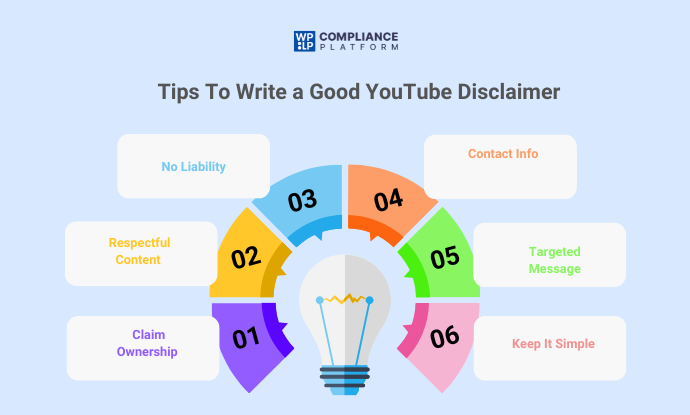
- Claim ownership of the channel.
- State that your videos do not intend to harm or disrespect anyone or hurt any sentiments. Also mentioned is that you create safe and inclusive content for all.
- Deny that you cannot accept responsibility for any adverse outcome or inconvenience caused by your content.
- Include your contact information
- Make it target-specific
- Ensure that your message is brief, easy to understand, and concise.
YouTube Disclaimer Example
Here is an example of a YouTube video disclaimer –
Lundbeck
Lundbeck is a YouTube channel that provides health-related advice. Therefore, it is liable to make it clear to its subscribers that its tips are not substitutes for medical treatment. It has published a professional liability disclaimer on its official website.
The disclaimer
Any information on diseases and treatments available at this channel is intended for general guidance only and must never be considered a substitute for the advice provided by a doctor or other qualified healthcare professional.
Always seek the advice of your physician or other qualified healthcare professional with questions you may have regarding your medical condition.
Although Lundbeck takes all reasonable care to ensure that the contents of the YouTube channel are accurate and up-to-date, all information contained on it is provided ‘as is’.
Lundbeck makes no warranties or representations of any kind concerning the accuracy or suitability of the information contained on this YouTube channel.
Lundbeck may at any time and at its sole discretion change or replace the information available on this channel.
To the extent permitted by mandatory law, Lundbeck shall not be liable for any direct, incidental, consequential, indirect, or punitive damages arising out of access to or use of any content available on this channel, including viruses, regardless of the accuracy or completeness of any such content.
Lundbeck disclaims any control over, relationship with, or endorsement of views expressed by other YouTube users.
Any links to other websites are provided only as a convenience and Lundbeck encourages you to read the privacy statements of any third-party websites.
All comments will be reviewed by Lundbeck and may be deleted if deemed inappropriate. Comments which are off-topic, offensive, or promotional will not be posted. The comments/posts are from members of the public and do not necessarily reflect the views of Lundbeck.
Who Needs a YouTube Disclaimer?
All YouTube channel owners need a disclaimer. It protects you legally and makes your image clean and transparent to users. What kind of disclaimer you need entirely depends on the content of your videos.
For instance, if you offer legal advice, it is always better to clearly state that users should consult a lawyer before using it. Sometimes, this may cause some trouble because your advice is generic.
You don’t know the ground reality of all the viewers. Everybody’s problem is different. A disclaimer saves you from the claims that can arise if some viewer faces problems following your guidance.
How to Create a General Disclaimer

Now that you know the importance of a disclaimer. You must be thinking of creating one for your website. However, creating one manually or with the help of legal experts can be difficult and time-consuming.
This is where a tool like WP legal pages comes in. WP Legal Pages is a free privacy policy generator for WordPress.It helps to create a professional Privacy Policy, terms of use, terms & conditions, eCommerce returns & refunds policy, affiliate disclaimers & more.
With over 25+ legal templates available, WP Legal Pages makes creating all the necessary legal notices for your website easy. We will go through the steps of creating a general disclaimer using the WP Legal Pages Plugin.
Once you have Installed and activated the WP Legal Pages Plugin. You can then access it from your WordPress dashboard. Open the Plugin and click on Create Legal Pages.
Step 1: Installing WP Legal Pages Plugin
From your WordPress Dashboard, click on Plugins > Add New.
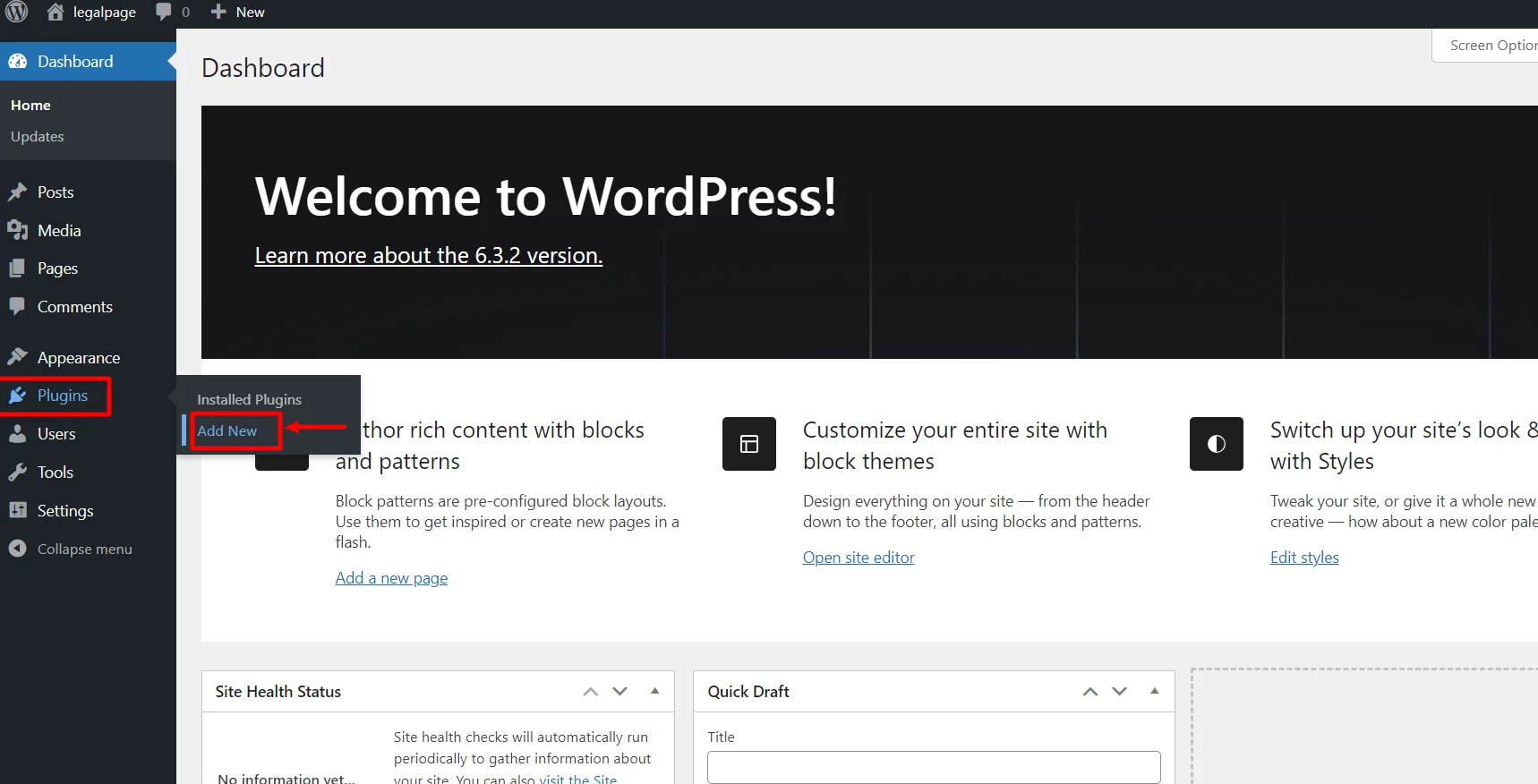
Search for WPLegalPages in the search bar.
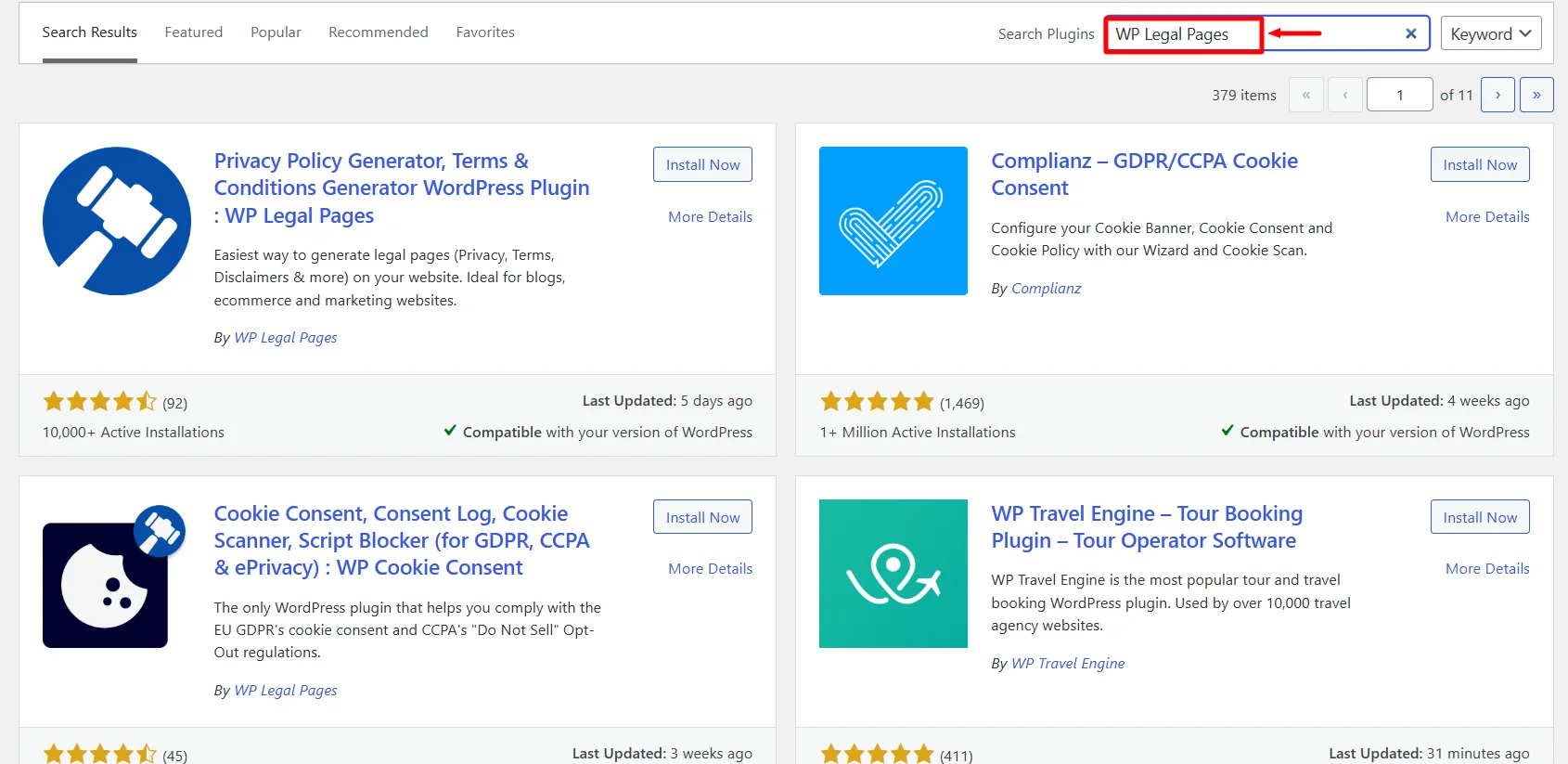
Click on the Install Now Button
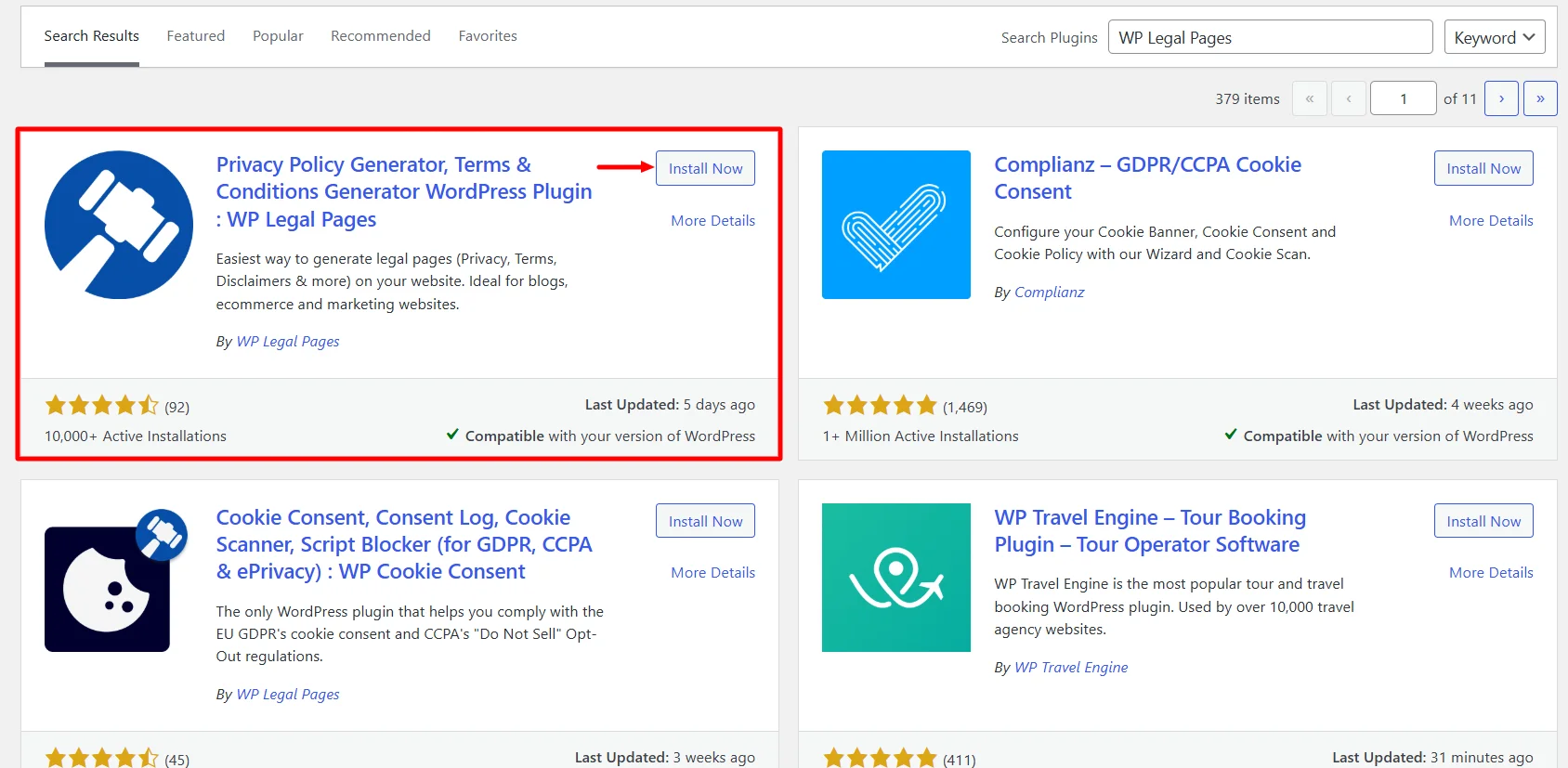
Activate the WP Legal Pages plugin by clicking the Activate button.
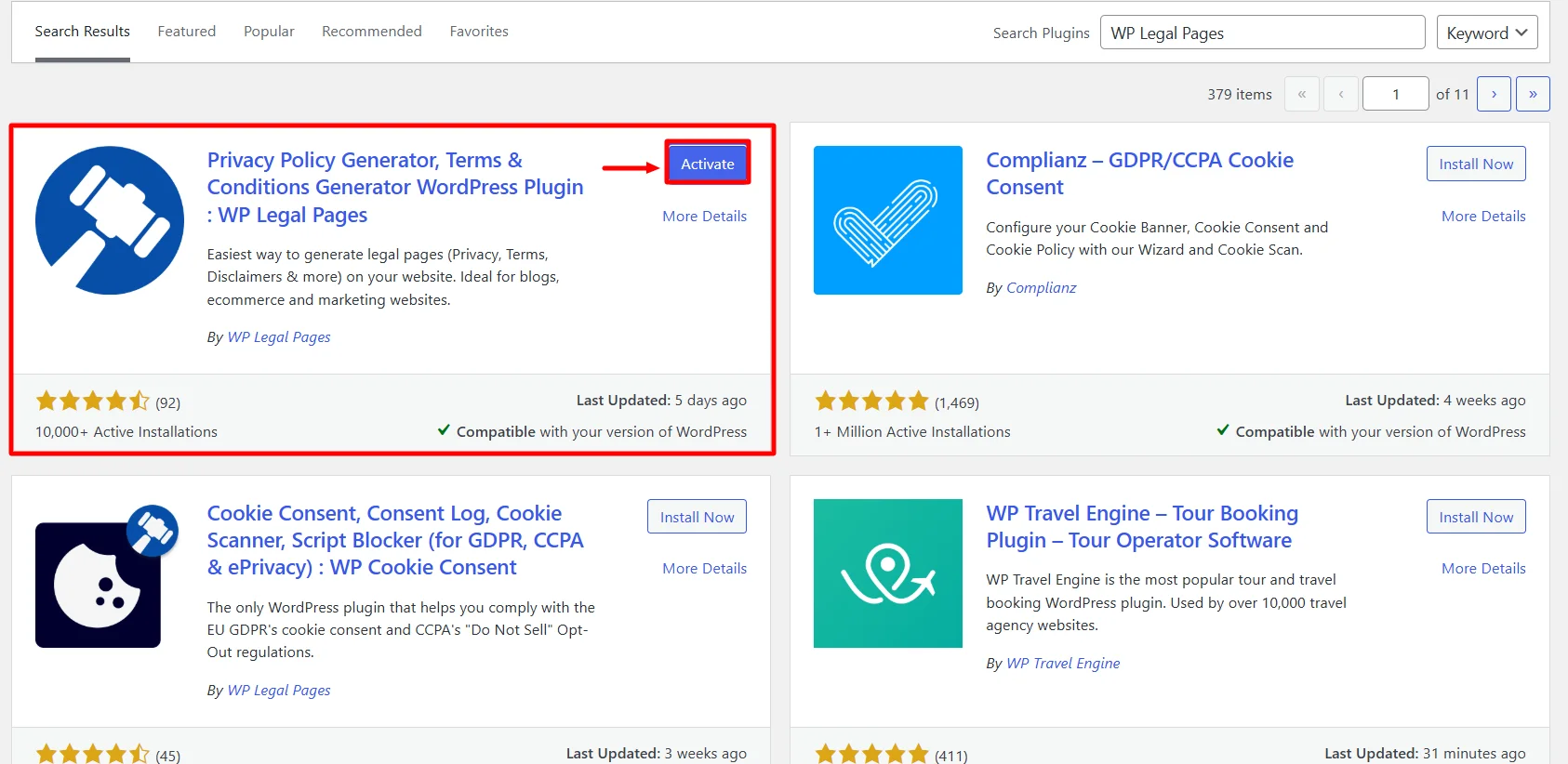
Step 2: Configuring WP Legal Pages Plugin
Once you have activated the plugin, you can access it directly from the Dashboard.
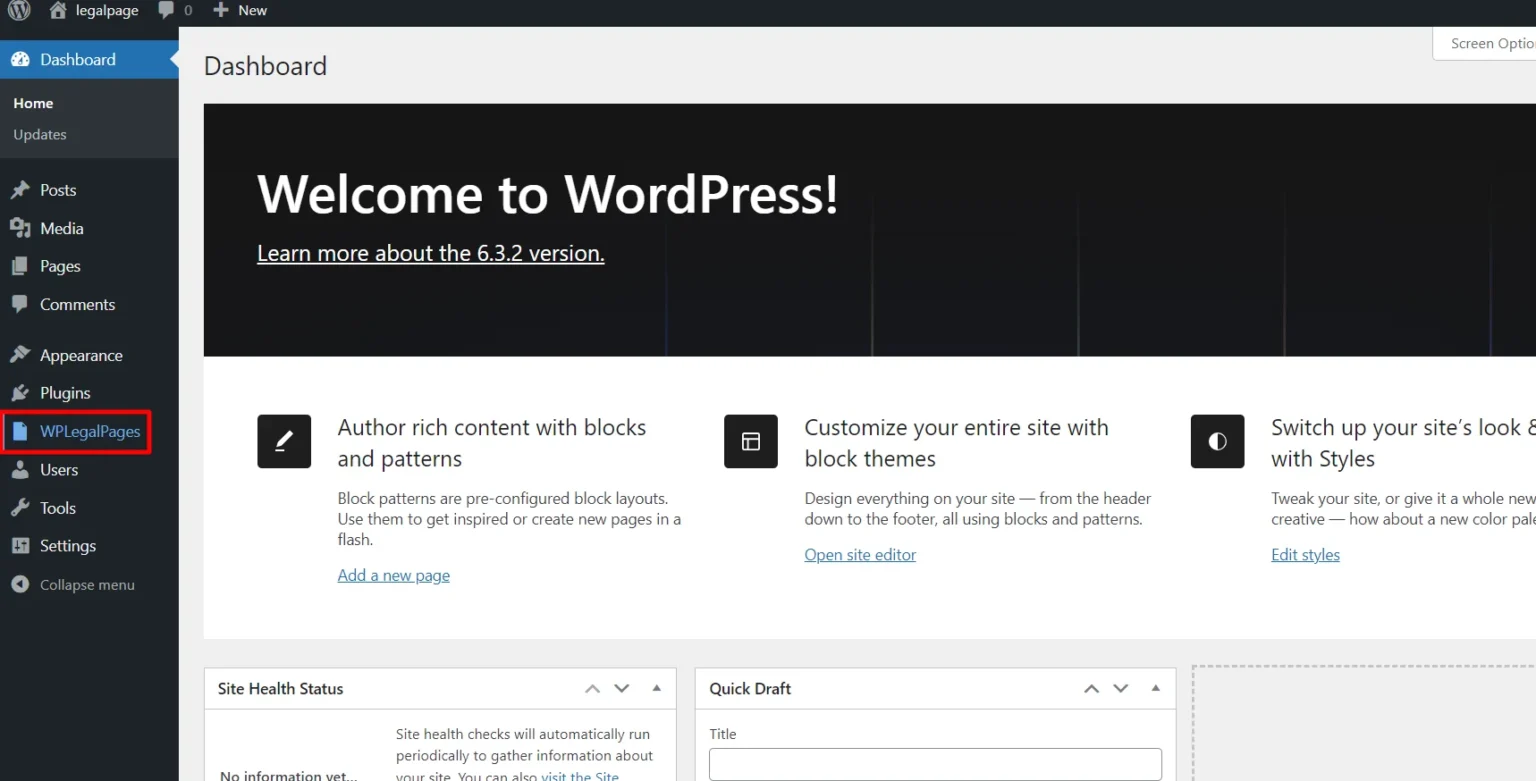
Next, Accept the terms of use of the WPLegalPages plugin.
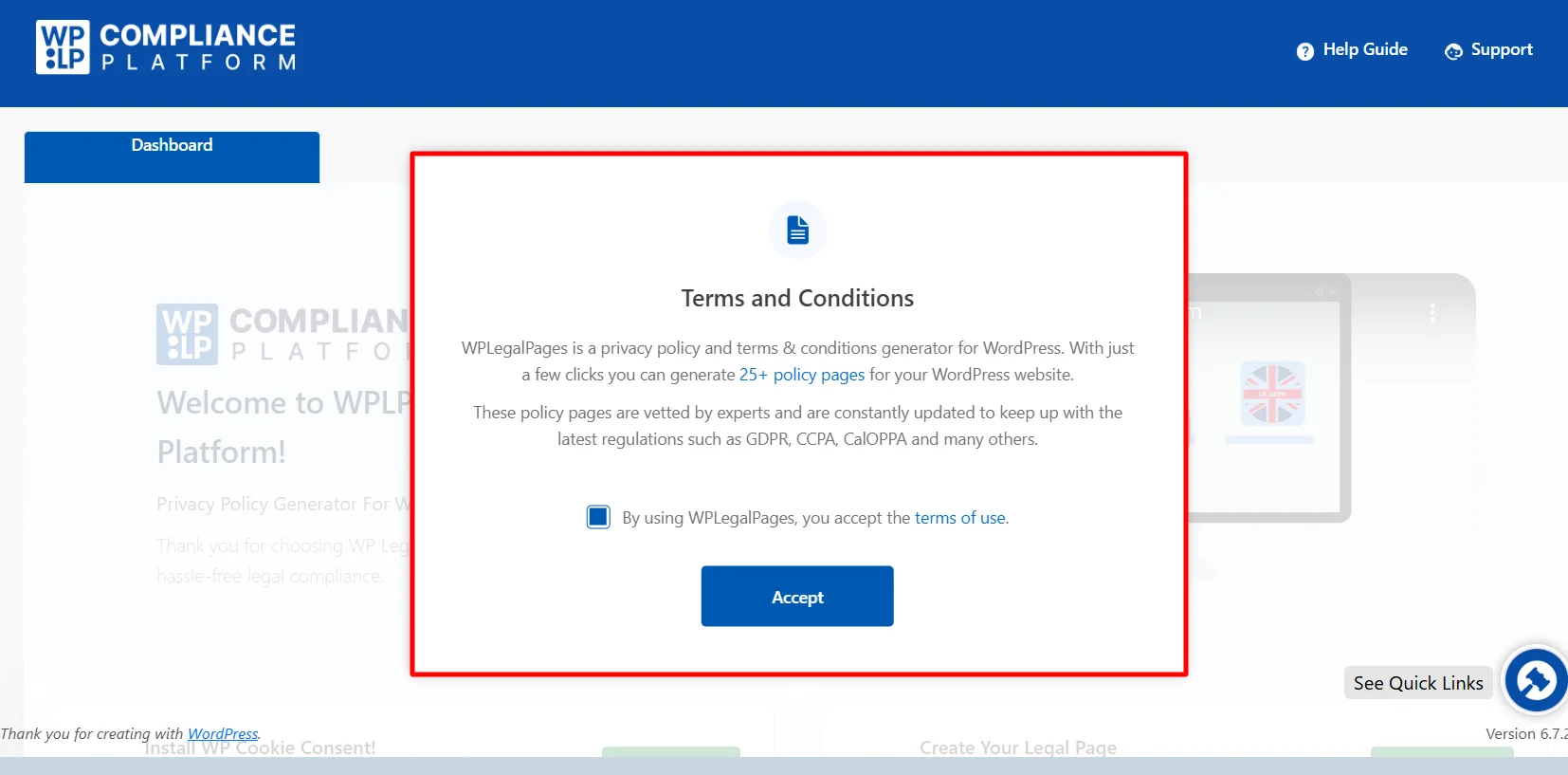
Step 3: Create an Account with WP Legal Pages Plugin
To generate legal pages for your website, scroll down from the dashboard and click Create Page.
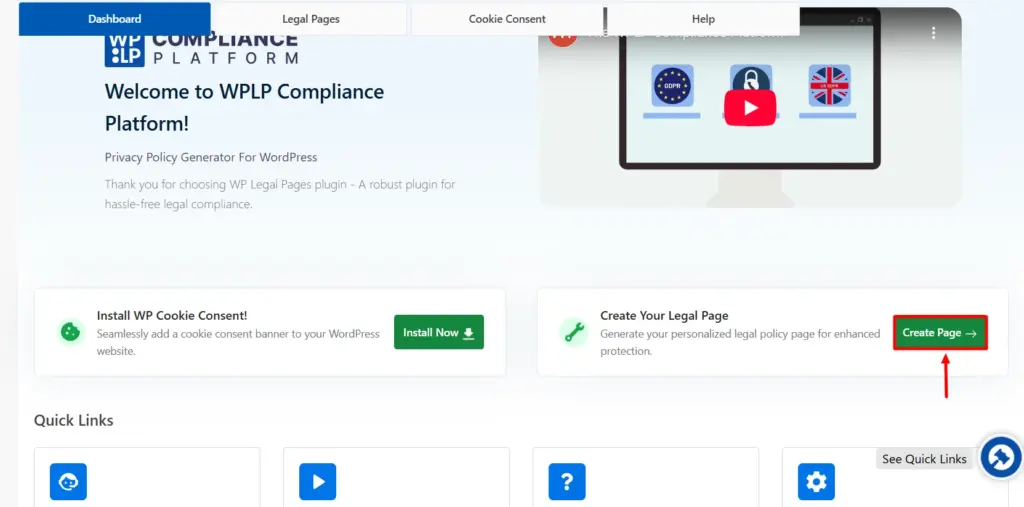
This will open the WPLegalPages wizard. From the WPLegalPages wizard, choose the Standard Privacy Policy template and click the Create button.
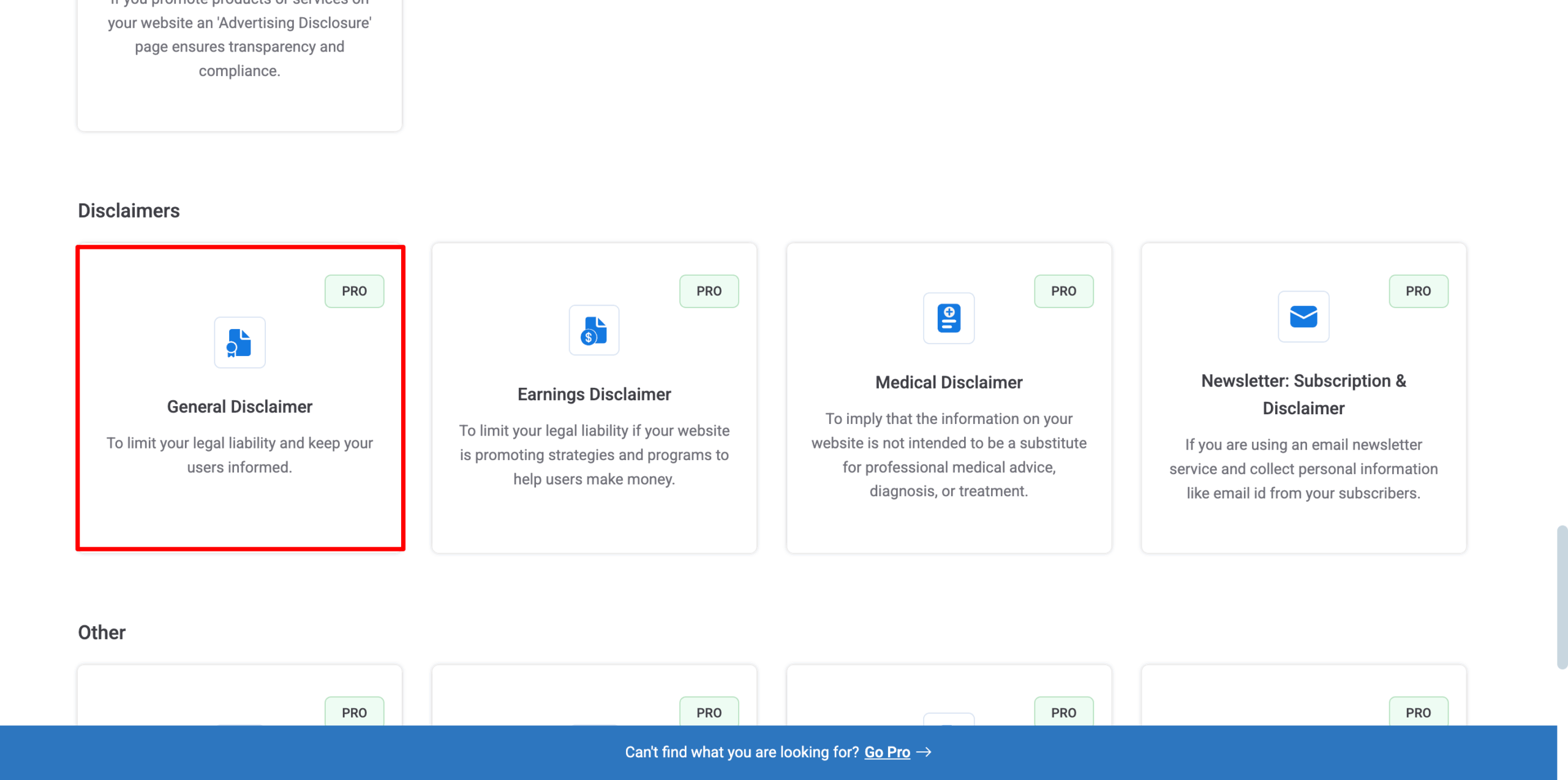
Once you click Create, a popup will appear, asking you to create a new account. Click on New? Create an account.
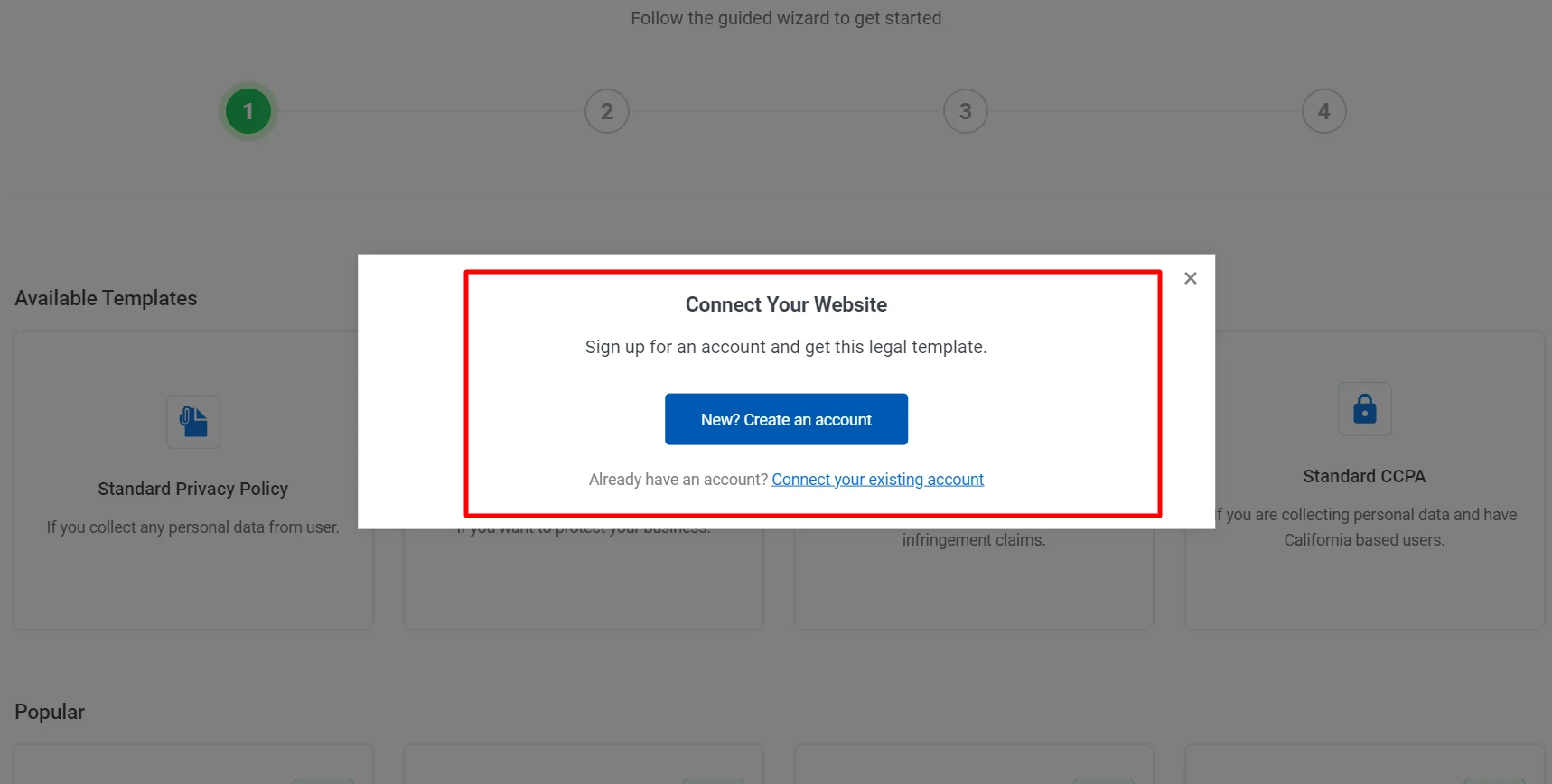
Once you Sign up, your account will automatically connect to your site, and you can start creating legal pages for your website.
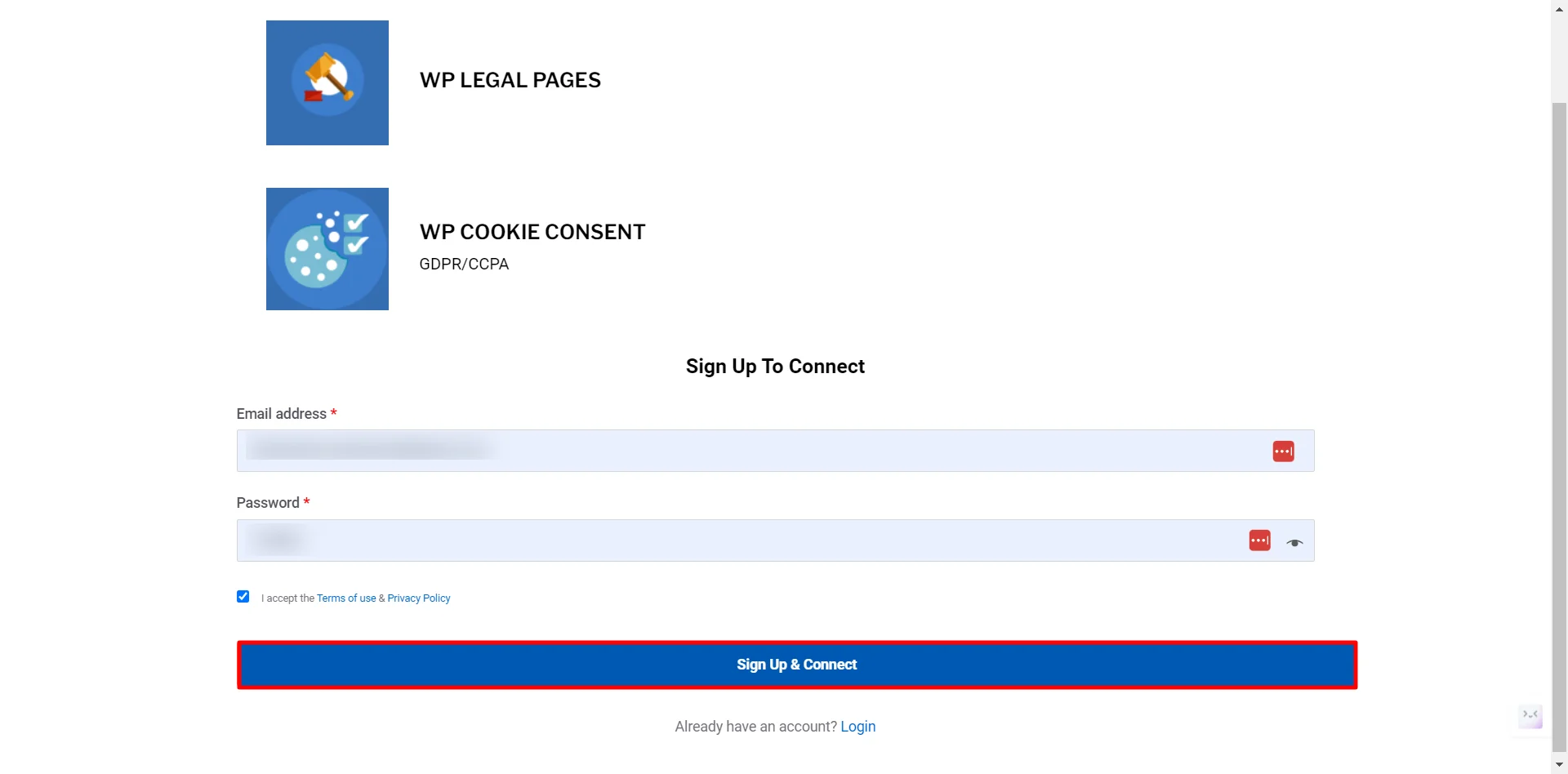
That’s it. You have created an account and can now start creating your website’s Legal Pages. Let’s see how we can create a YouTube disclaimer for your websites.
Step 4: Creating a YouTube Disclaimer for Your Website.
You will now see a few Templates available. Click on the general disclaimer option to create a YouTube disclaimer for your website.
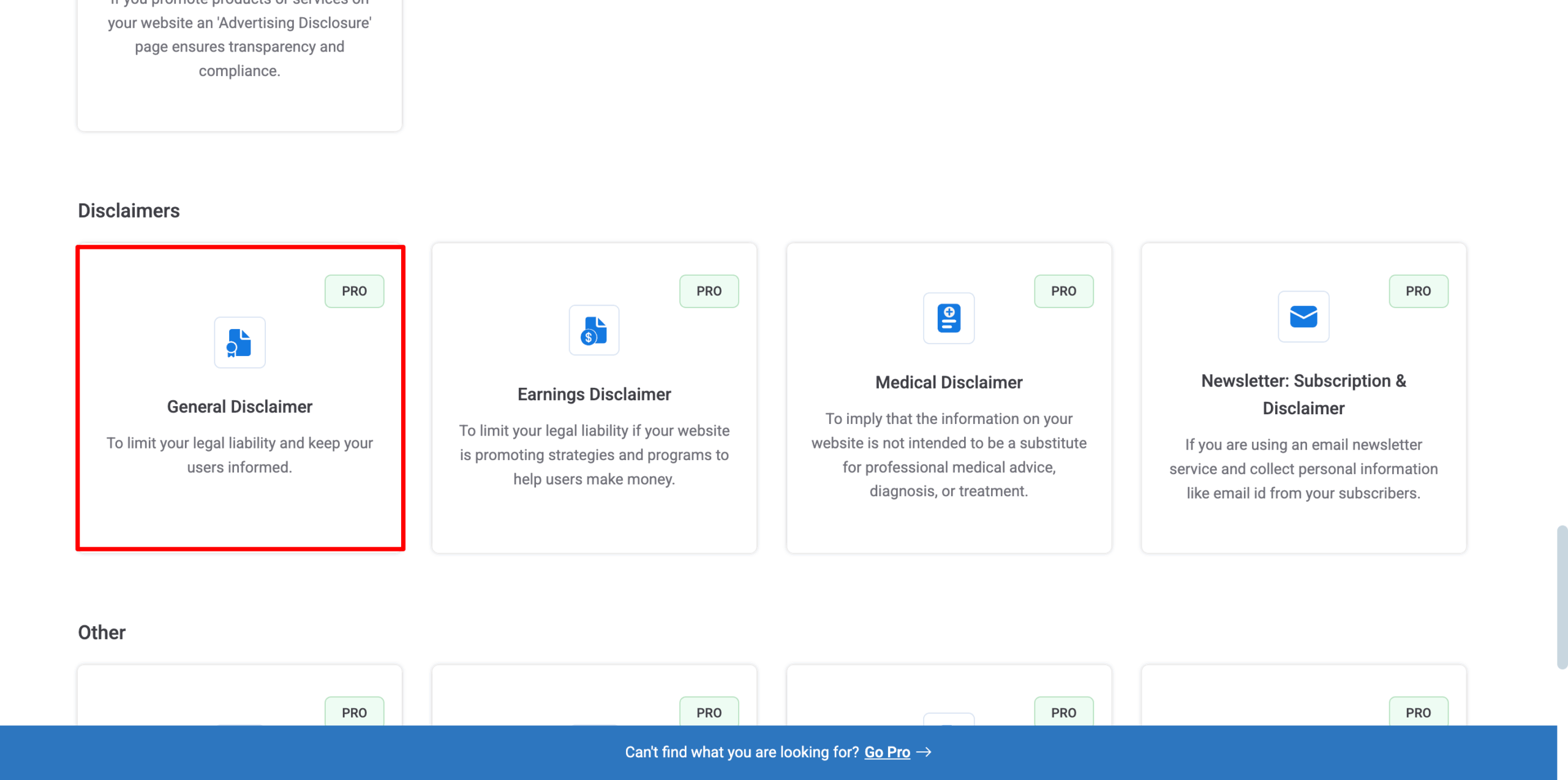
(Note that to create a General Disclaimer, you will need WP Legal Pages Pro)
Change the settings if needed and click NEXT.
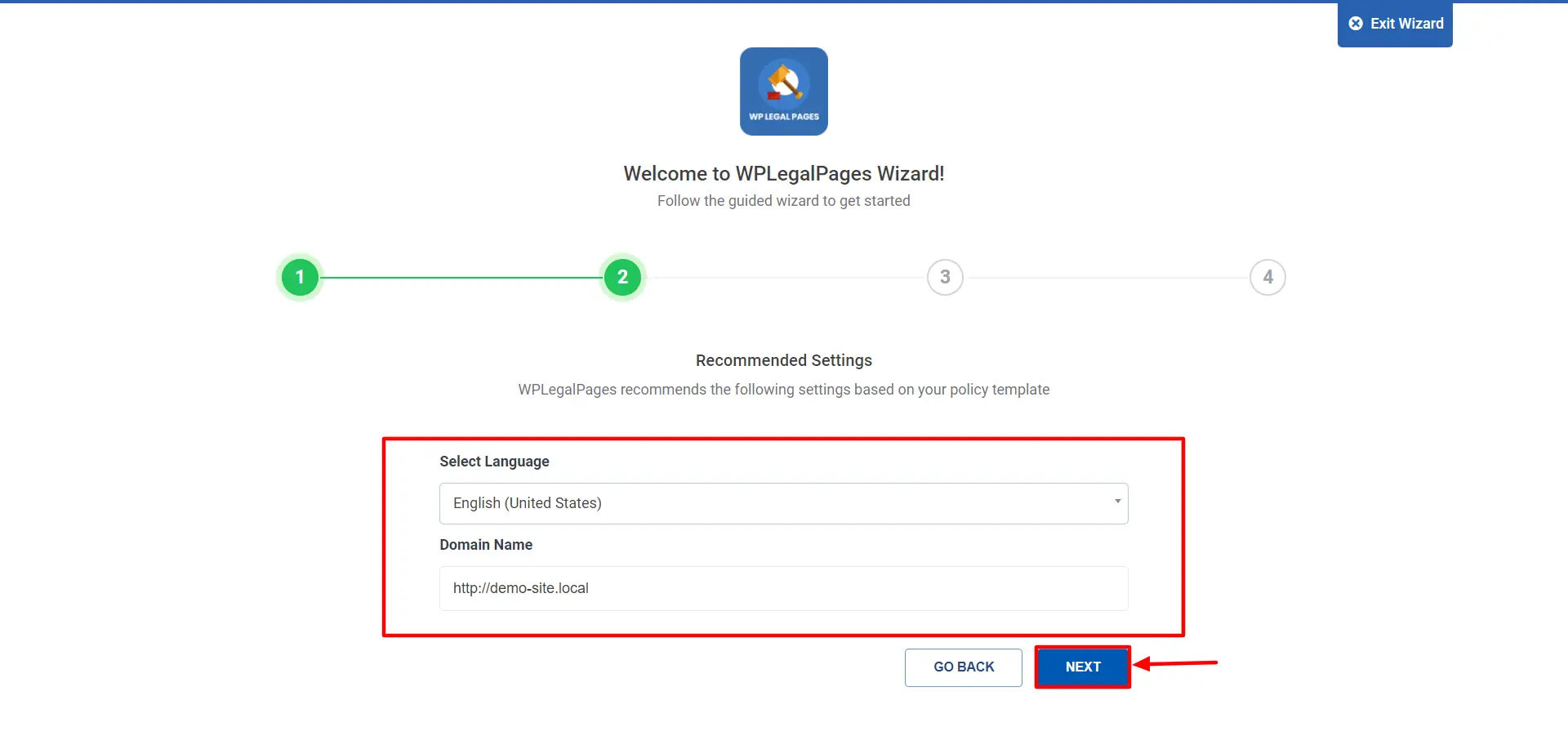
Review your Policy Template and click CREATE AND EDIT.
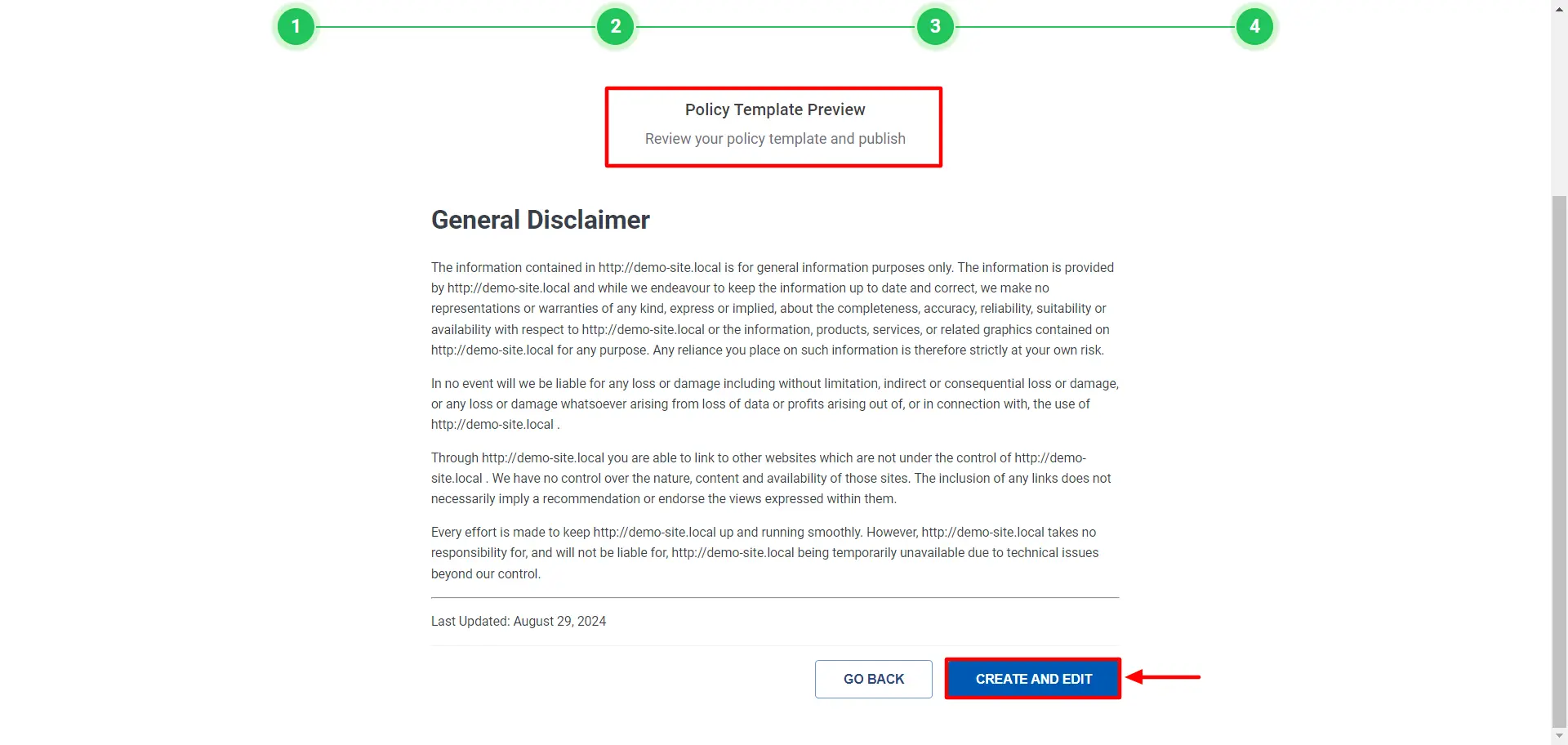
Edit your disclaimer template. Once done, click on Publish.
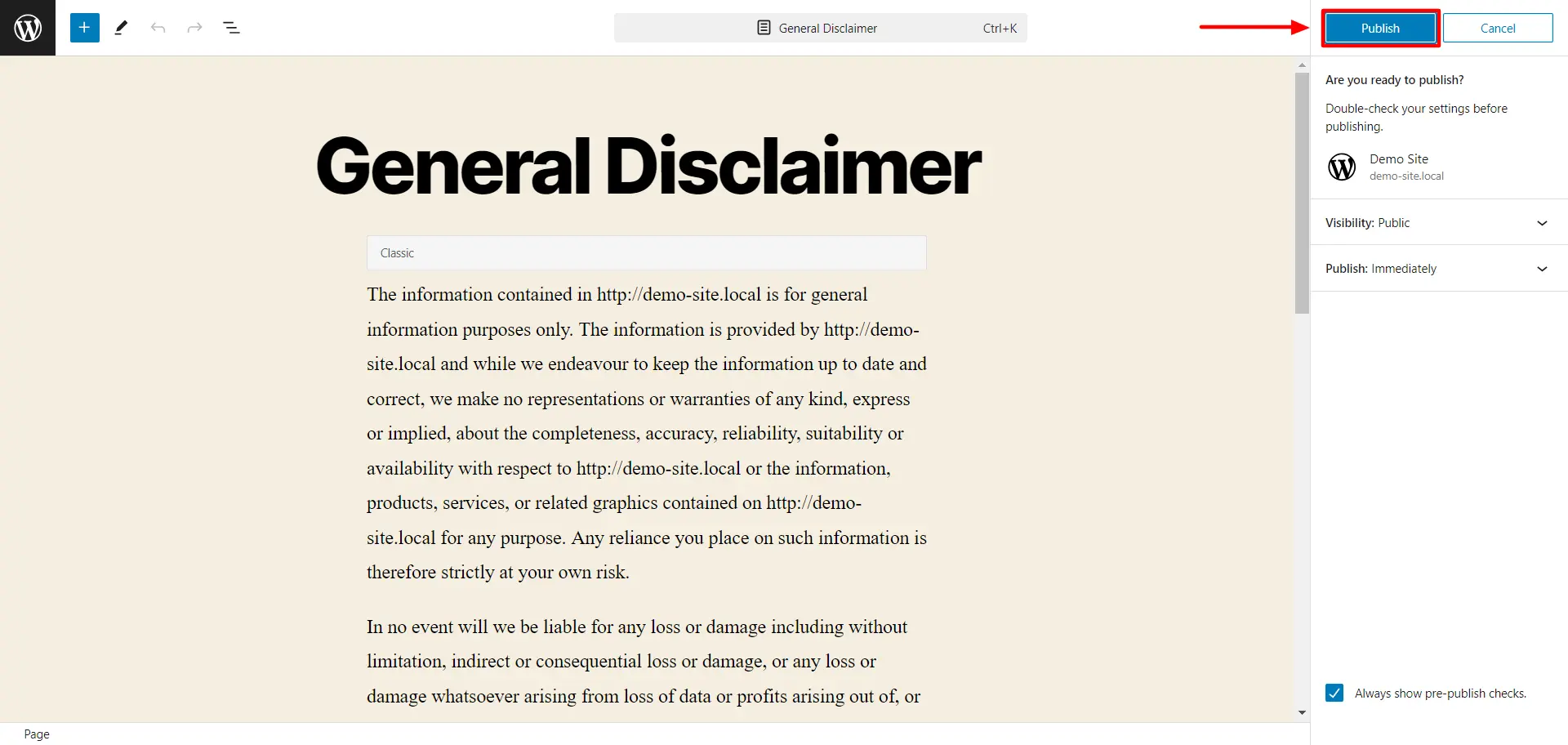
Thats it! Your General Disclaimer is live on your website.
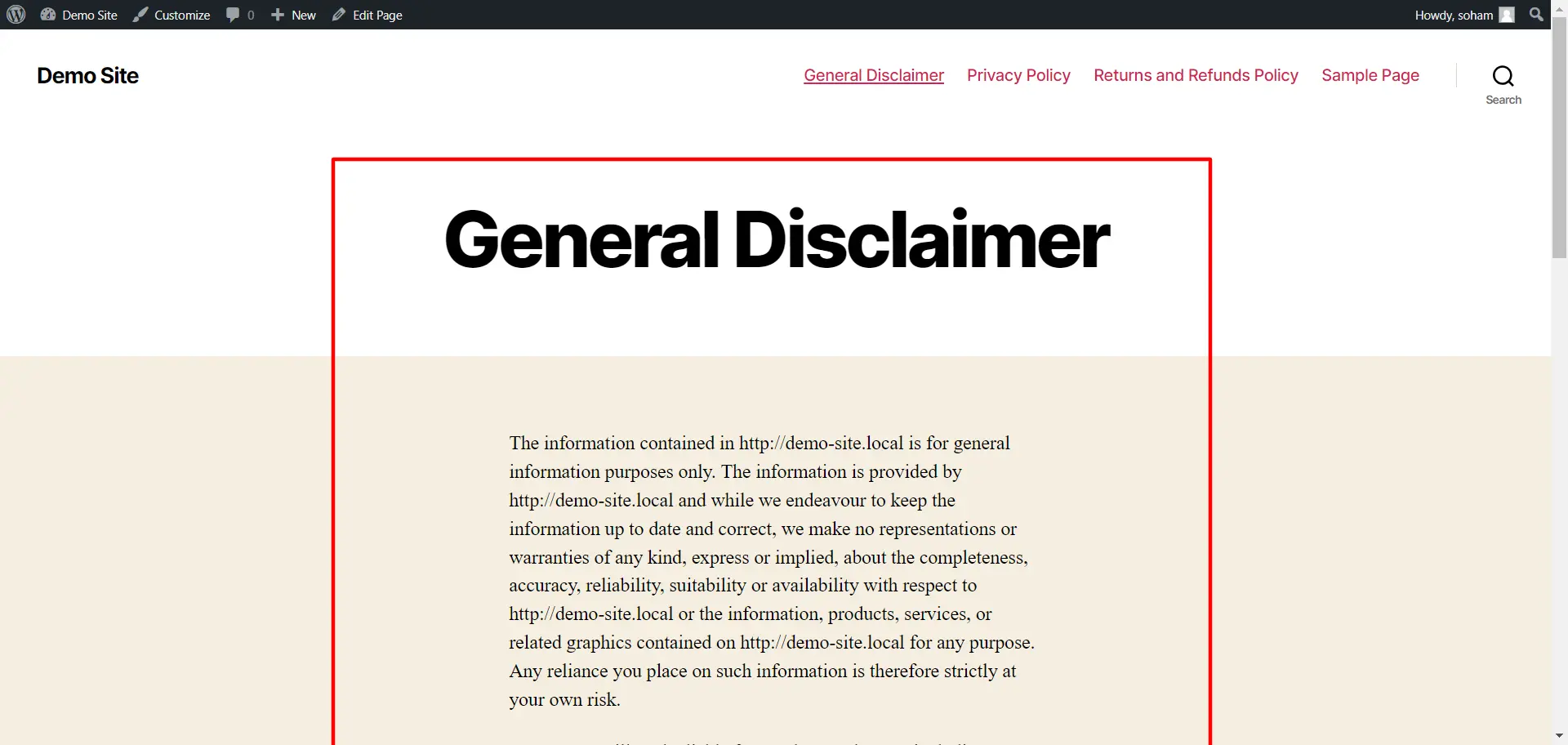
Where Should You Place The Disclaimer?
YouTube disclaimers are generally found on the channel’s official website or the owner’s web pages. They may also be placed on the channel’s homepage or individual videos.
If placed on a video, the disclaimer should be added at the beginning or end. Most people prefer adding a disclaimer at the beginning. Regardless of where you place it, ensure it is noticeable and not easily missed.
You should be careful when deciding on the placement of the disclaimer. Additionally, it should be easily distinguishable from the other contents of the page, such as:
- In the video description box
- On the About’ section of the channel
- The terms and conditions agreement posted on your website
- Verbally stated in the actual content of your video.
FAQs
YouTube disclaimers are statements that clarify your content’s intent, partnerships, or potential legal risks. In 2025, they’re crucial for maintaining transparency with viewers, complying with legal and platform policies, and avoiding demonetization or penalties.
Not necessarily. Disclaimers are typically needed if your video includes sponsored content, affiliate links, medical or financial advice, sensitive topics, or content not suitable for all audiences.
You must disclose your affiliate relationships clearly, such as: “This video contains affiliate links. I may earn a commission at no extra cost to you.” This is required by the FTC and many international advertising standards.
Disclaimers should be placed in both the video description and verbally mentioned or shown on-screen within the video to ensure visibility and compliance.
Final Thoughts
If you upload videos on YouTube, including disclaimers, it can help limit your legal responsibilities, safeguard your original content, or express your fair use of copyrighted materials. You can clarify that any action taken based on your video is at the viewer’s risk.
If you want to use copyrighted material in your video but don’t have permission, you can rely on a fair use exemption. We recommend using the WP Legal Pages plugin to generate a YouTube disclaimer. It helps create legal pages quickly.
If you’ve liked reading this article, check out our other engaging articles as well:
- How To Add Copyright Text To A Website
- Do I Need A Privacy Policy For My Website? – A Beginner’s Guide
- Understanding Privacy Statements and Simplifying Compliance
Want to create legal pages for your website or YouTube channel? Grab the WP Legal Pages Plugin now!
